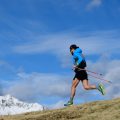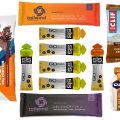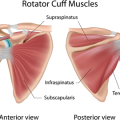If you’re like most endurance athletes, the idea of a nap for a workout not only sounds oxymoronic but downright blasphemous. After all, the definition of a workout is “a session of vigorous physical exercise.” And a period of slumber is anything but a session of vigorous physical exercise. But, then again, that is the entire point.

As we know from Exercise Physiology 101, the training process involves a stimulus that triggers a physiological response in the body which results in a positive adaptation (a fitness gain). Notably, the positive adaptation occurs after the stimulus breaks the body down a bit and has a chance to rebuild. In rebuilding to better handle such stimuli again (such as running several miles at a fast rate of speed), the body benefits from a positive training effect that leads to an improved state of fitness.
In other words, the basic equation that underlies training looks like this:
Training + Recovery = Fitness
As athletes, we focus intently on the “training” part of this equation. After all, hard work is the sine qua non for building fitness and improving performance. So we engage in “sessions of vigorous physical exercise” (otherwise known as workouts or training sessions), attempting to provide the necessary overload appropriate to our individual situation and thereby grow stronger and become faster.
Yet problems arise when the other part of that training equation is neglected: recovery. When you wake up at 6 am to go to the track to do those cruise intervals, get to the office by 8 am for an eight hour day of work, take a break at lunch for some strength training, and then stop by the pool on the way home for that masters swim workout, there is little time left in the day to dedicate specifically to recovery.
Sure, it may be possible to handle this type of training schedule day in and day out with little sleep…if you’re young, have a low stress job or are gifted with the genes of an Olympic caliber athlete (and even then everyone must pay homage to the full equation of the training process one way or another). But if you’re like the rest of the active population of age-groupers that engage in endurance events while juggling work, family, school and other life commitments, consistently neglecting the recovery part of the training equation can take a toll—not just on your athletic performance, but on your ability to enjoy life to the fullest.
It’s not normal to walk around like a zombie tired all the time from hard training and stressful work. If that sounds like you, the solution is to pay specific attention to your recovery in your training plan. I’ll go as far as to say that you should pay as much attention to your recovery as you do to your training schedule. So how is that to be accomplished in a sport that lauds killer workouts and the ability to squeeze training out of every waking minute not spent at the office or with family?
Try this. When you put together your upcoming training week, specifically schedule in “workouts” dedicated to, yes, taking a nap, or some other form of recovery activity, such as spending an hour in your Recovery Boots reading a book. And here’s the clincher (I know this is hard for some of you): when you see this nap or rest time on your schedule, you must treat it as seriously as any key workout that week. Coach’s orders!
If you are a constantly-on-the-go athlete, this strategy can help you adhere to both sides of the full training equation, while taking the guilt out of using a perfectly good hour of the day for a nap. After all, if it’s on the training schedule it will be easier to hold yourself accountable to this necessary—yet often neglected—aspect of the training process.







